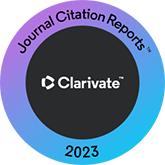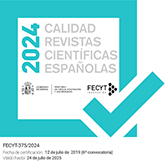(Inter-)Fonología del Español Contemporáneo (I)FEC: Methodology of a research program for corpus phonology
DOI:
https://doi.org/10.3989/loquens.2018.046Keywords:
Corpus phonology, Spanish, methodology, variation, Discourse Completion Task (DCT)Abstract
The present contribution describes and discusses the methodology of the corpus phonological research program (Inter-)Fonología del Español Contemporáneo —(I)FEC—, which aims to document both the phonic variation in the Spanish-speaking world and the pronunciation of Spanish as an L2 and a foreign language in different learner groups. Partly based on the methodology of the French research program (Inter)Phonologie du Français Contemporain —(I)PFC—, (I)FEC includes, in addition to a word list with several (potential) minimal pairs and a reading task, also a discourse completion task (DCT) aiming to collect data for the analysis of different intonational tunes. The paper offers a detailed description of the individual tasks of the protocol, before discussing practical aspects of the data collection.
Downloads
References
ADDU = Thun, H., y Elizaincín, A. (2000). Atlas lingüístico diatópico y diastrático del Uruguay. Tomo I: Consonantismo y vocalismo del español. Fasc. A.1.: Lateral palatal (/?/, <ll>) y fricativa mediopalatal (/j/, <y>): Lleísmo, yeísmo, ?eísmo y cheísmo en el español uruguayo. Kiel: Westensee.
Álvarez Menéndez, A. I. (2005). Hablar en español. La cortesía verbal, la pronunciación estándar del español, las formas de expresión oral. Oviedo: Nobel.
Beaud, S., y Weber, F. (2010). Guide de l'enquête de terrain (4.ª ed.). Paris: La Découverte.
Brown, E. L., y Torres, R. (2003). Spanish /s/: A different story from beginning (initial) to end (final). En R. Núñez-Cedeño, L. López y R. Cameron (Eds.), A Romance perspective on language knowledge and use. Selected papers from the 31st Linguistic Symposium on Romance Languages (pp. 22-38). Amsterdam/Philadelphia: John Benjamins.
Buben, V. (1935). Influence de l'orthographe sur la prononciation du français. Paris: Droz.
Bybee, J. (2001). Phonology and language use. Cambridge: Cambridge University Press. https://doi.org/10.1017/CBO9780511612886
Canfield, D. L. (1981). Spanish pronunciation in the Americas. Chicago, IL: The University of Chicago Press.
Caravedo, R. (1992). ¿Restos de la distinción /s/ /?/ en el español del Perú? Revista de Filología Española, 72(3-4), 639-654. https://doi.org/10.3989/rfe.1992.v72.i3/4.586
Cartagena, N. (1999). Los tiempos compuestos. En I. Bosque y V. Demonte (Eds.), Gramática descriptiva de la lengua española. Volumen 2. Las construcciones sintácticas fundamentales. Relaciones temporales, aspectuales y modales (pp. 2935-2978). Madrid: Espasa-Calpe.
Chambers, J. K., y Trudgill, P. (1980). Dialectology. Cambridge: Cambridge University Press.
Clyne, M. (Ed.). (1992). Pluricentric languages. Different norms in different nations. Berlin/New York: Mouton de Gruyter.
Colantoni, L., y Cuervo, M. C. (2013). Clíticos acentuados. En L. Colantoni y C. Rodríguez Louro (Eds.), Perspectivas teóricas y experimentales sobre el español de la Argentina (pp. 143-157). Frankfurt/Madrid: Vervuert.
Côté, M.-H. (2014). Le projet PFC et la géophonologie du français laurentien. En J. Durand, G. Kristoffersen, B. Laks y J. Peuvergne (Eds.), La phonologie du français. Normes, périphéries, modélisation (pp. 175-198). Nanterre: Presses Universitaires de Paris Ouest. PMid:26521364
D'Introno, F., del Teso, E., y Weston, R. (1995). Fonética y fonología actual del español. Madrid: Cátedra.
Delforge, A. M. (2009). The rise and fall of unstressed vowel reduction in the Spanish of Cusco, Peru: A sociophonetic study [tesis doctoral]. Davis: University of California.
Detey, S., Durand, J., Laks, B., y Lyche, C. (2016). The PFC programme and its methodological framework. En S. Detey, J. Durand, B. Laks y C. Lyche (Eds.), Varieties of spoken French (pp. 13-23). Oxford: Oxford University Press. https://doi.org/10.1093/acprof:oso/9780199573714.003.0002
Detjen, H. (2017). Anglizismen in Hispanoamerika: Adoption und Integration, Nivellierung und Differenzierung. Berlin: de Gruyter. https://doi.org/10.1515/9783110489736
Díaz-Campos, M. (2004). Context of learning in the acquisition of Spanish second language phonology. Studies in Second Language Acquisition, 26(2), 249-373. https://doi.org/10.1017/S0272263104262052
DLE = Real Academia Española y Asociación de Academias de la Lengua Española (Eds.) (2014). Diccionario de la Lengua Española (23.a ed.). Disponible en http://dle.rae.es/
DPD = Real Academia Española y Asociación de Academias de la Lengua Española (Eds.) (2005). Diccionario panhispánico de dudas. Madrid: Santillana. Disponible en http://www.rae.es/recursos/diccionarios/dpd.
Draxler, C., y Jänsch, K. (2004). SpeechRecorder - A Universal Platform Independent Multi-Channel Audio Recording Software. En Proceedings of the 4th International Conference on Language Resources and Evaluation (LREC). Disponible en http://www.lrec-conf.org/proceedings/lrec2004/
Durand, J., Laks, B., y Lyche, C. (2002). La Phonologie du français contemporain. Usages, variétés et structure. En C. Pusch y W. Raible (Eds.), Romanistische Korpuslinguistik: Korpora und gesprochene Sprache (pp. 93-106). Tübingen: Narr.
Durand, J., Laks, B., y Lyche, C. (2009). Le projet PFC. Une source de données primaires structurées. En J. Durand, B. Laks y C. Lyche (Eds.), Phonologie, variation et accents du français (pp. 19-61). Paris: Hermès.
Durand, J., y Przewozny, A. (2012). La phonologie de l'anglais contemporain: usages, variétés et structure. Revue française de linguistique appliquée, 17(1), 25-37.
Face, T. L. (2006). Intervocalic rhotic pronunciation by adult learners of Spanish as a second language. En C. A. Klee y T. L. Face (Eds.), Selected proceedings of the 7th Conference on the Acquisition of Spanish and Portuguese as first and second languages (pp. 47-58). Somerville, MA: Cascadilla Press.
Félix-Brasdefer, J. C. (2010). Data collection methods in speech act performance: DCTs, role-plays, and verbal reports. En A. Martínez-Flor y E. Usó-Juan (Eds.), Speech act performance: Theoretical, empirical, and methodological issues (pp. 41-56). Amsterdam: Benjamins. https://doi.org/10.1075/lllt.26.03fel
Fouché, P. (1959). Traité de prononciation française (2.ª ed.). Paris: Klincksieck.
Frota, S., y Prieto, P. (Eds.). (2015). Intonation in Romance. Oxford: Oxford University Press. https://doi.org/10.1093/acprof:oso/9780199685332.001.0001
Gabriel, C., Feldhausen, I., Pe?ková, A., Colantoni, L., Lee, S.-R., Arana, V., y Labastía, L. (2010): Argentinian Spanish intonation. En P. Prieto y P. Roseano, (Eds.), Transcription of intonation of the Spanish language (pp. 285-317). München: Lincom.
Gabriel, C., Meisenburg, T., y Selig, M. (2013). Spanisch: Phonetik und Phonologie. Eine Einführung. Tübingen: Narr.
GDLE = Sánchez Pérez, A. (Ed.) (1991). Gran Diccionario de la Lengua Española (4.ª ed.). Barcelona: Larousse.
González-Bueno, M. (1997). The effects of formal instruction on the acquisition of Spanish stop consonants. En A. T. Pérez-Leroux y W. R. Glass (Eds.), Contemporary perspectives on the acquisition of Spanish. Volume 2: Production, processing, and comprehension (pp. 57-76). Somerville, MA: Cascadilla.
Hualde, J. I. (con Colina, S.). (2005). The sounds of Spanish. Cambridge: Cambridge University Press.
Hualde, J. I. (2014). Los sonidos del español. Cambridge: Cambridge University Press.
Kasper, G., y Dahl, M. (1991). Research methods in interlanguage pragmatics. Studies in Second Language Acquisition, 13(2), 215-247. https://doi.org/10.1017/S0272263100009955
Knouse, S. M. (2013). The acquisition of dialectal phonemes in a study abroad context: The case of the Castilian theta. Foreign Language Annals, 45(4), 512-542. https://doi.org/10.1111/j.1944-9720.2013.12003.x
Kubarth, H. (1987). Das lateinamerikanische Spanisch. München: Hueber.
Labov, W. (1972). Sociolinguistic patterns. Oxford: Blackwell.
Lafford, B. (1986). Valor diagnóstico-social del uso de ciertas variantes de /s/ en el español de Cartagena, Colombia. En R. Nú-ez Cede-o, I. Páez y J. Guitart (Eds.), Estudios sobre la fonología del español del Caribe (pp. 53-75). Caracas: La Casa de Bello.
Laks, B. (2010). La linguistique des usages. De l'exemplum au datum. En P. Cappeau, H. Chuquet y F. Valetoupolos (Eds.), L'exemple et le corpus. Quel statut? (pp. 13-29). Rennes: Presses Universitaires de Rennes.
Lipski, J. M. (1990). Spanish taps and trills: Phonological structure of an isolated opposition. Folia Linguistica, 24(3-4), 153-174. https://doi.org/10.1515/flin.1990.24.3-4.153
Lipski, J. M. (1994). Latin American Spanish. London: Longman.
Lipski, J. M. (2004). El español de América. Madrid: Cátedra. PMCid:PMC420508
Llama, R., Cardoso, W., y Collins, L. (2010). The influence of language distance and language status on the acquisition of L3 phonology. International Journal of Multilingualism, 7, 39-57. https://doi.org/10.1080/14790710902972255
Llanos, F., y Francis, A. L. (2016). The effects of language experience and speech context on the phonetic accommodation of English-accented Spanish voicing. Language and Speech, 60, 1-24.
Lord, G. (2005). (How) Can we teach foreign language pronunciation? On the effects of a Spanish phonetics course. Hispania, 88(3), 557-567. https://doi.org/10.2307/20063159
Lord, G. (2010). The combined effects of immersion and instruction on second language pronunciation. Foreign Language Annals, 43(3), 488-503. https://doi.org/10.1111/j.1944-9720.2010.01094.x
Martinet, A. (1971). La prononciation du français contemporain (2.ª ed.). Genève: Droz.
Martinet, A., y Walter, H. (1973). Dictionnaire de la prononciation française dans son usage réel. Paris: France-Expansion.
Meisenburg, T. (2003). Français et occitan à Lacaune. Tribune internationale des langues vivantes, 33, 128-134. Disponible en http://www.home.uos.de/tmeisenb/Meisenburg.TILV 2003.pdf
Milroy, L. (1980). Language and social networks. London: Blackwell. PMCid:PMC1430222
Momcilovic, N. B. (2009). A sociolinguistic analysis of s-aspiration in Madrid Spanish. München: Lincom.
Moreno de Alba, J. G. (2002). La pronunciación del español en México (2.ª ed.). México, D. F.: El Colegio de México.
Navarro Tomás, T. (1999). Manual de pronunciación española (27.ª ed.). Madrid: Consejo Superior de Investigaciones Científicas.
NGLE = Real Academia Española y Asociación de Academias de la Lengua Española (Eds.) (2011). Nueva gramática de la lengua española. Fonética y fonología. Barcelona: Espasa.
Oesterreicher, W. (2000). Plurizentrische Sprachkultur - der Varietätenraum des Spanischen. Romanistisches Jahrbuch, 51(1), 287-318. https://doi.org/10.1515/roja-2000-0139
Olsen, M. K. (2012). The L2 acquisition of Spanish rhotics by L1 English speakers. The effect of L1 articulatory routines and phonetic context for allophone variation. Hispania, 95(1), 65-82.
Penny, R. (2000). Variation and change in Spanish. Cambridge: Cambridge University Press. https://doi.org/10.1017/CBO9781139164566
PONS = https://de.pons.com/
Pratt, C. (1980). El anglicismo en el español peninsular contemporáneo. Madrid: Gredos.
Prieto, P., y Cabré, T. (Coord.) (2007-2012). Atles interactiu de l'entonació del català. Disponible en http://prosodia.upf.edu/atlesentonacio/
Prieto, P., y Roseano, P. (Coord.) (2009-2013). Atlas interactivo de la entonación del español. Disponible en http://prosodia.upf.edu/atlasentonacion/
Prieto, P., y Roseano, P. (Eds.) (2010). Transcription of intonation of the Spanish language. München: Lincom.
Pustka, E. (2007). Phonologie et variétés en contact. Aveyronnais et Guadeloupéens à Paris. Tübingen: Narr.
Pustka, E., Gabriel, C., y Meisenburg, T. (2016). Romance corpus phonology. From (Inter-)Phonologie du Français Contemporain (I)PFC to (Inter-)Fonología del Español Contemporáneo (I)FEC. En C. Draxler y F. Kleber (Eds.), Tagungsband der 12. Tagung Phonetik und Phonologie im deutschsprachigen Raum (pp. 151-154). München: LMU. Disponible en https://epub.ub.uni-muenchen.de/29405
Quilis, A. (2008). Principios de fonología y fonética españolas (4.ª ed.). Madrid: Arco Libros.
Racine, I., Zay, F., Detey, S., y Kawaguchi, Y. (2012). Des atouts d'un corpus multitâches pour l'étude de la phonologie en L2. L'exemple du projet 'Interphonologie du français contemporain' (IPFC). En A. Kamber y C. Skupiens Dekens (Eds.), Recherches récentes en FLE (pp. 1-19). Bern: Lang.
Rojo, G., y Veiga, A. (1999). El tiempo verbal. Los sistemas simples. En I. Bosque y V. Demonte (Eds.), Gramática descriptiva de la lengua española (pp. 2897-2934). Madrid: Espasa-Calpe.
Scheer, T. (2014). Compte rendu de R. Gess, C. Lyche & T. Meisenburg (Eds.), Phonological variation in French. Illustrations from three continents. Amsterdam: Benjamins, 2012. Bulletin de la Société de Linguistique de Paris, 109, 178-186.
Schoonmaker-Gates, E. (2015). On voice-onset time as a cue to foreign accent in Spanish: Native and nonnative perceptions. Hispania, 98(4), 779-791. https://doi.org/10.1353/hpn.2015.0110
Vokic, G. (2010). L1 allophones in L2 speech production: The case of English learners of Spanish. Hispania, 93(3), 430-452.
Zampini, M. L. (2014). Voice onset time in second language Spanish. En K. L. Geeslin (Ed.), The handbook of Spanish second language acquisition (pp. 113-129). Malden: Wiley-Blackwell.
Published
How to Cite
Issue
Section
License
Copyright (c) 2018 Consejo Superior de Investigaciones Científicas (CSIC)

This work is licensed under a Creative Commons Attribution 4.0 International License.
© CSIC. Manuscripts published in both the print and online versions of this journal are the property of the Consejo Superior de Investigaciones Científicas, and quoting this source is a requirement for any partial or full reproduction.
All contents of this electronic edition, except where otherwise noted, are distributed under a Creative Commons Attribution 4.0 International (CC BY 4.0) licence. You may read the basic information and the legal text of the licence. The indication of the CC BY 4.0 licence must be expressly stated in this way when necessary.
Self-archiving in repositories, personal webpages or similar, of any version other than the final version of the work produced by the publisher, is not allowed.














